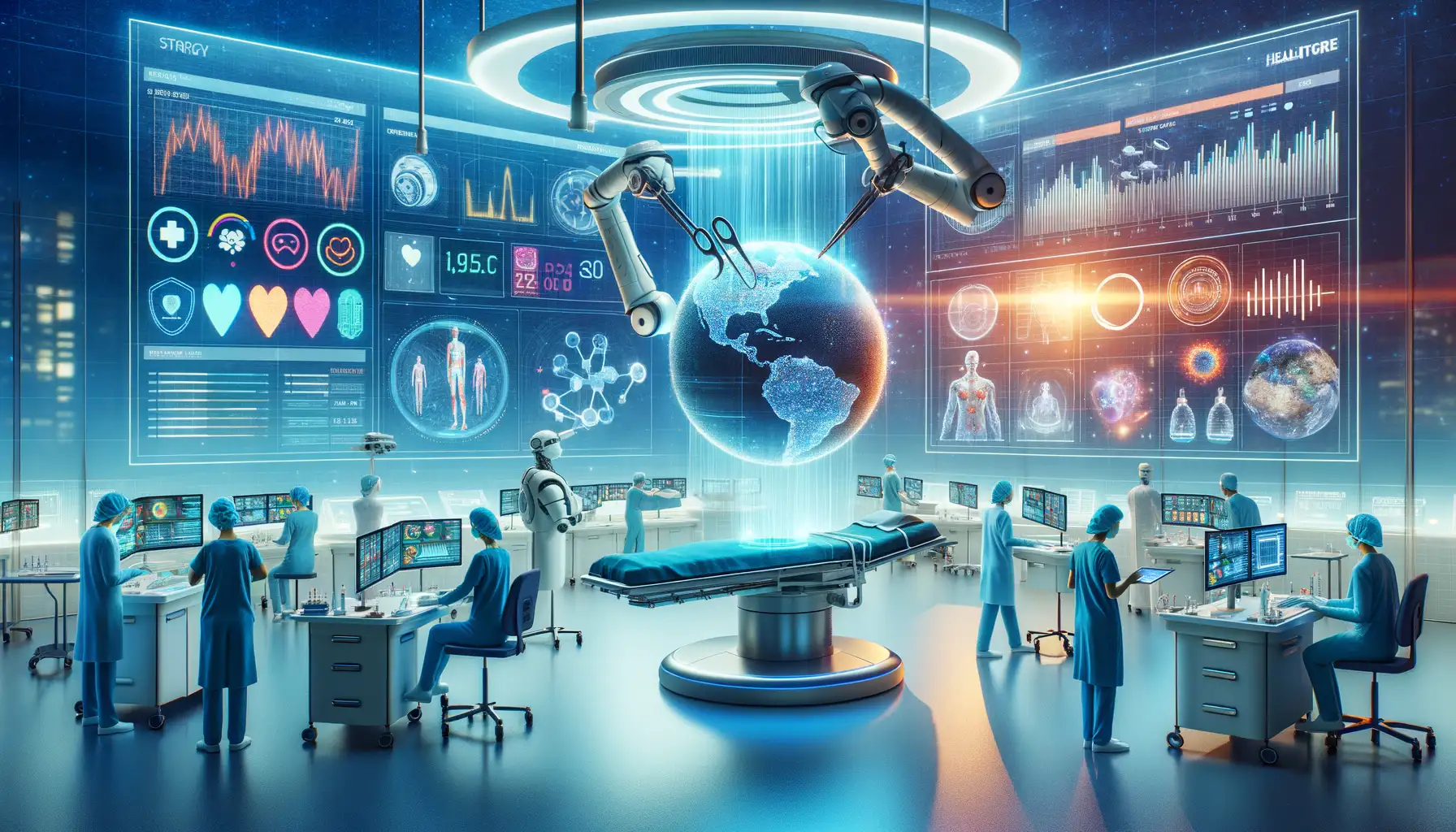The Role of Big Data in Healthcare Innovations
Introduction to Big Data in Healthcare
Imagine walking into a hospital where every decision, from diagnosis to treatment plans, feels almost tailor-made for you. That’s not a fantasy—it’s the magic of Big Data. In today’s healthcare landscape, data is no longer just numbers on a spreadsheet. It’s becoming the heartbeat of medical innovation, driving insights that were once impossible.
What Exactly Is Big Data in Healthcare?
Think about every time you visit a clinic: lab results, prescriptions, family history, wearables tracking your steps or heart rate—this is just a fraction of what’s collected. Now multiply that by millions of patients across the globe. Big Data in healthcare refers to these massive collections of structured and unstructured information that, when analyzed, reveal patterns, trends, and predictions beyond human capabilities.
From Chaos to Clarity
Transforming raw information into actionable insights is like turning a noisy crowd into a harmonious symphony. With advanced technologies, Big Data can now:
- Predict disease outbreaks before they spread widely by analyzing population health trends.
- Personalize treatments using genetic and lifestyle data to figure out what works best for each patient.
In short, it’s not just about having more data—it’s about knowing how to listen to the story it tells. And in healthcare, those stories save lives.
Applications of Big Data in Healthcare

Transforming Diagnosis and Treatment with Big Data
Imagine walking into a clinic where your doctor already knows the exact treatment you need, even before you’ve shared a single symptom. Sounds like magic? It’s not—it’s Big Data analytics reshaping how care is delivered. By analyzing mountains of health records, genetic data, and even lifestyle patterns, healthcare professionals can now identify diseases faster and prescribe personalized treatments tailored to your unique needs.
Take cancer care, for example. With advanced algorithms, doctors are discovering hidden patterns in patient data, leading to earlier interventions and dramatically improved survival rates. Machine learning tools can predict how you’ll respond to specific drugs, saving precious time when every second counts.
- Real-time monitoring of chronic conditions through wearable devices.
- Identifying and slowing down disease outbreaks by tracking population health trends.
- Streamlining administrative tasks like managing patient records and reducing errors.
Revolutionizing Public Health at Scale
Zoom out from individual care for a moment—Big Data is rewriting the rulebook for public health systems too. When COVID-19 hit, predictive models based on Big Data became lifesavers, helping governments allocate resources to hot zones and anticipate healthcare demands.
But it doesn’t stop there. Picture entire communities benefiting from predictive insights into disease risks or drawing up vaccination strategies that target the most vulnerable populations. From combating obesity trends to minimizing hospital readmissions, Big Data gives healthcare professionals the ultimate crystal ball.
Challenges in Implementing Big Data Solutions

Why Big Data Can Feel Like a Steep Mountain to Climb
Big data in healthcare sounds like a dream, right? Endless insights, better patient care, and breakthrough innovations! But the truth? Implementing big data solutions isn’t always a smooth ride; it’s more like scaling Everest without a map. Let’s talk about why.
First—all that data! Healthcare systems are drowning in it. From patient records to diagnostic images, the sheer volume is staggering. And it doesn’t help that this data lives in silos—disconnected islands with no bridge in sight. Imagine trying to piece together a puzzle while half the pieces are scattered across the ocean.
Then, there’s the issue of data quality. Sure, more data means more opportunities, but only if it’s accurate and clean. Outdated entries, incomplete records, or duplicate files can wreak havoc on your analytics and sink your efforts before they even get off the ground.
And let’s not forget resistance. Convincing healthcare professionals to embrace new tech can feel like herding cats—especially when they’re already juggling a thousand demands.
Bridging the Gap Between Vision and Reality
Even with top-tier technology, there’s a human factor you can’t ignore. A lack of IT expertise often turns big data dreams into blurred visions. Picture this: You’ve invested in cutting-edge analytics tools, only to realize your team needs months (or years) of training to use them effectively.
But perhaps the biggest challenge? Analysis paralysis. With so much data at your fingertips, how do you know what’s worth your attention? Without clear goals, it’s easy to drown in the details and miss the bigger picture.
Benefits of Big Data for Healthcare Systems

Imagine a healthcare system that can predict flu outbreaks before they happen or tailor treatments specifically to your unique DNA. Sounds futuristic, right? Well, thanks to Big Data, it’s becoming a reality. By analyzing massive amounts of health information, hospitals and clinics are transforming the way they operate—and the benefits are extraordinary.
Transforming Patient Outcomes with Precision
With the power of predictive analytics, Big Data is reshaping how doctors diagnose and treat diseases. Let’s say a patient is showing subtle symptoms of heart disease—what might have gone unnoticed in the past can now be flagged early through data analysis. This means personalized care and better patient outcomes. It’s like having a crystal ball, but instead of magic, it’s science.
Here’s how it helps:
- Early Detection: Algorithms analyze patterns to spot diseases before symptoms fully develop.
- Tailored Treatment: Treatments are fine-tuned using data on patients’ genetics and medical history.
- Reduced Readmissions: Predictive models help prevent complications, saving both lives and costs.
Revolutionizing Operations Behind the Scenes
It’s not just about patient care—Big Data is working hard behind the curtains, too. Hospitals juggle countless moving pieces: staff schedules, medication inventories, patient records. With streamlined data-driven systems, inefficiencies melt away, making room for seamless operations.
For example, using Big Data, hospitals can predict surges in emergency room visits (hello, flu season!) and allocate resources accordingly. This reduces wait times and keeps patients happier—not to mention healthier.
Big Data isn’t just an innovation; it’s the heartbeat of a smarter, healthier future for all of us.
Future Trends and Opportunities in Healthcare Analytics

Reimagining Patient Care Through Predictive Insights
The future of healthcare analytics is nothing short of revolutionary. Imagine a world where your doctor doesn’t just treat illnesses as they come but anticipates them before they even knock on your door. That’s the promise of leveraging predictive analytics powered by Big Data. By analyzing mountains of health records, genetics, and lifestyle data, algorithms can spot patterns that even the most experienced clinicians might miss.
Picture this: A wearable device pings you because it detects heart stress signals—days before symptoms appear. And it’s not stopping there. From personalized cancer treatments to optimizing hospital staffing during flu season, the applications are expanding faster than ever.
Emerging Tech and Untapped Potential
In this brave new world of healthcare, technology like Artificial Intelligence (AI), blockchain systems, and even Internet of Medical Things (IoMT) are shaping tomorrow’s possibilities. Some trends already gaining traction include:
- Real-time remote monitoring for chronic disease management through smart devices.
- Blockchain ensuring tamper-proof patient data sharing with complete transparency.
- AI-powered imaging tools that redefine diagnostics with unmatched precision.
What’s truly thrilling is that the ultimate power here lies in how these tools interact with humans. Think of healthcare analytics not as a distant, sterile system but as a symphony—where technology and empathy harmonize to create a healthier tomorrow.
